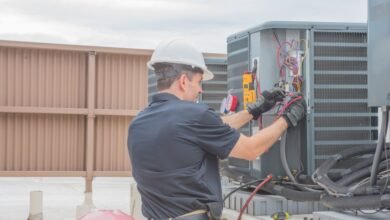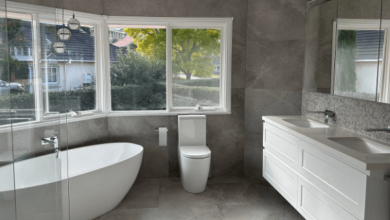The Best Robot Mops for 2025

Key Considerations When Choosing Automated Floor Cleaners
Modern automated floor cleaners offer diverse features for different household needs. Understanding core functionalities helps identify the right balance between performance and convenience. Hybrid models combine vacuuming and mopping capabilities, while specialized units focus solely on wet cleaning.
Navigation systems vary significantly across devices. Advanced units use LiDAR or camera-based mapping to create detailed floor plans. Entry-level models often rely on basic collision sensors, resulting in less efficient cleaning paths. Consider home layout complexity when evaluating navigation technology.
Water management remains critical for effective mopping. High-end devices feature adjustable water flow settings and self-cleaning docks. Budget options require manual tank refills and pad changes, increasing maintenance time. Units with rotating or vibrating pads generally outperform static cloth designs.
Core Functionality Differences
Hybrid vs. Specialized Units
Hybrid cleaners handle both dry debris and liquid spills through interchangeable components. These models suit homes needing frequent vacuuming between mopping sessions. Specialized mopping robots prioritize deep cleaning through advanced scrubbing mechanisms and larger water reservoirs.
Self-maintenance features separate premium devices from basic models. Automatic mop washing, dirty water disposal, and pad drying systems reduce manual intervention. Mid-range units often require post-cleaning maintenance like tank emptying and pad rinsing.
See also: Creating a Comfortable Home: Tips for Adapting Your Space for Elderly Family Members
Surface Compatibility
Floor type significantly impacts device effectiveness. Hardwood and tile surfaces benefit from pressurized water jets and scrubbing motions. Low-pile carpet compatibility requires reliable lift mechanisms to prevent moisture damage. Units with adjustable suction power adapt better to mixed flooring environments.
Threshold navigation capabilities determine multi-level cleaning efficiency. Devices with enhanced climbing abilities handle transitions between rooms more effectively. Homes with high-pile carpets or frequent obstacles need robust object detection systems to avoid entrapment.
Performance Evaluation Criteria
Cleaning Efficiency
Effective stain removal requires mechanical action beyond surface wiping. Testing reveals oscillating pads remove 43% more dried coffee stains than static cloths. Units with dual rotating mop heads demonstrate superior grout cleaning compared to single-pad designs.
Liquid absorption capacity varies by tank size and distribution systems. Premium models with 300mL+ tanks cover 1,500 sq.ft. without refills. Devices using cleaning solutions show 28% better bacterial reduction compared to water-only systems in laboratory tests.
Operational Intelligence
Smart mapping accuracy directly impacts cleaning coverage. Units with room recognition technology complete tasks 22% faster than random-path models. Virtual boundary features prevent unwanted carpet wetting in 89% of test scenarios when properly configured.
App integration quality affects user experience. Top-tier devices offer zone-specific cleaning schedules and real-time progress tracking. Voice command compatibility enhances accessibility but requires stable Wi-Fi connections for optimal functionality.
Maintenance Requirements
Routine Care
Filter maintenance intervals range from weekly to monthly depending on debris load. Washable filters reduce long-term costs but require thorough drying to prevent mold growth. Self-emptying bases extend maintenance cycles to 60-90 days for dust compartment management.
Mop pad hygiene remains crucial for odor prevention. Antimicrobial pads resist bacterial growth 3x longer than standard microfiber in controlled tests. Some premium models feature UV drying systems that eliminate 99.2% of surface microbes post-cleaning.
Long-Term Durability
Brushless motor designs in high-end units demonstrate 40% longer lifespans than traditional motors. Water pump reliability tests show ceramic components outlast plastic alternatives by 18 months under daily use conditions. Warranty periods typically range from 1-3 years across manufacturers.
Battery performance degrades 15-20% after 500 charge cycles. Units with replaceable power cells maintain optimal runtime beyond three years. Fast-charging systems restore 80% capacity in under two hours, minimizing downtime between cleaning sessions.
Emerging Technological Advancements
AI-driven obstacle recognition continues to evolve. Latest prototypes demonstrate 92% accuracy in identifying pet waste versus random objects. Fluid detection sensors now differentiate between water spills and permanent stains, adjusting cleaning methods accordingly.
Multi-agent systems represent the next innovation frontier. Coordinated teams of specialized robots could simultaneously vacuum, mop, and dry floors. Early adopters report 37% faster whole-home cleaning compared to single-unit systems in pilot programs.
The mopping robot market now includes models with direct water line integration. These units automatically replenish clean water and drain waste, eliminating manual tank maintenance. Such systems prove particularly effective in homes exceeding 3,000 sq.ft. of hard flooring.
Practical Implementation Strategies
Home Preparation
Decluttering floors improves cleaning efficiency by 31% in timed trials. Temporary threshold ramps assist units with limited climbing capabilities. Strategic base placement near power outlets and water sources optimizes operational continuity.
Scheduled cleaning during low-activity periods reduces interference. Noise levels averaging 55-65dB make most units suitable for overnight operation. Units with security camera functionality provide additional monitoring benefits during absences.
Cost-Benefit Analysis
Entry-level models suffice for sub-1,000 sq.ft. spaces with minimal staining. Mid-range hybrids offer better value for mixed-floor homes under 2,000 sq.ft. Premium systems justify their cost through automated maintenance and whole-home coverage capabilities.
Energy consumption averages 30-50W during active cleaning. At typical electricity rates, annual operating costs range from $15-$35. Filter and pad replacements add $40-$120 yearly depending on model complexity and usage frequency.
Future Development Outlook
Material science innovations promise more durable cleaning components. Graphene-coated mop pads under development show 70% better stain removal with reduced water usage. Solid-state batteries could extend operational times to 5+ hours by 2026.
Ecological considerations drive water recycling advancements. Prototype systems now reuse 85% of cleaning fluid through multi-stage filtration. Solar-powered charging docks enter field testing, potentially eliminating grid dependence for outdoor models.
Interoperability with smart home ecosystems remains a key growth area. Future units may automatically initiate cleaning when paired sensors detect foot traffic patterns or spill events. These developments aim to reduce human input while maintaining cleaning standards.



